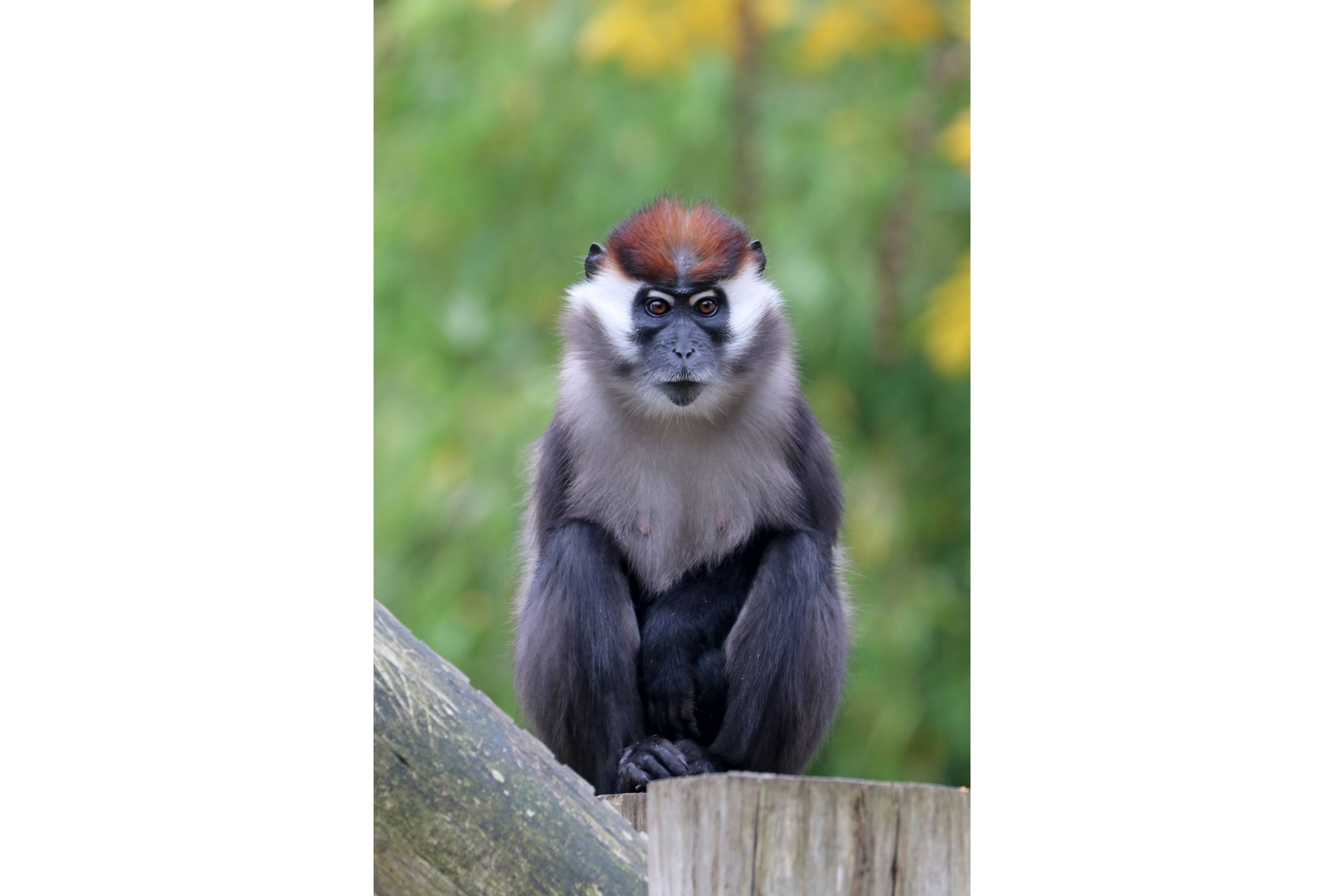Sooty mangabey
(Cercocebus atys)

Description
The sooty mangabey (Cercocebus atys) is an Old World monkey found in forests from Senegal in a margin along the coast down to the Ivory Coast. The sooty mangabey is native to tropical West Africa, being found in Guinea, Guinea-Bissau, Liberia, Senegal, Sierra Leone, and Ivory Coast. Sooty mangabeys inhabit both old growth and secondary forests as well as in flooded, dry, swamp, mangrove, and gallery forests. Sooty mangabeys are terrestrial omnivores, typically spending around 75% of their overall time on the ground (~85% of travel time and ~71% of foraging time). In their foraging behaviors, sooty mangabeys typically consume fruits (~20% of diet), invertebrates (~13% of diet), and nuts and seeds (>55% of diet). In acquiring nuts, sooty mangabeys have been observed scavenging the remains of coula and panda nuts cracked by chimpanzees and red river hogs, potentially using either the sound of cracking nuts or social networks to identify sites of remnants. Sooty mangabeys are gray-colored primates with a lighter-colored chest and stomach. Their faces are typically grayish pink, with darker fur along the forehead and ears; given their diet of hard seeds and nuts, sooty mangabeys are observed to have strong molars. Sooty mangabeys also show sexual dimorphism; males typically weight ~10–11 kg, while females are typically smaller at ~5–6 kg. Sooty mangabeys typically live and forage in large, multi-male, multi-female groups of 70–120 individuals. Sooty mangabeys form linear dominance hierarchies within sexes and form coalitions; within these hierarchies, higher-ranking females typically are found to spend less time foraging as opposed to feeding than their lower-ranking counterparts and were more centrally located within groups. Similarly, higher-ranking males were found to be more centrally located within the group, and be better fed and rested. And in captivity, higher-ranking males sired more offspring, indicating that higher male rank is generally predictive of greater reproductive success. Overall, however, females are found to be located in a more central spatial position within the group and better fed and rested than males, independent of ranking.
Taxonomic tree:







